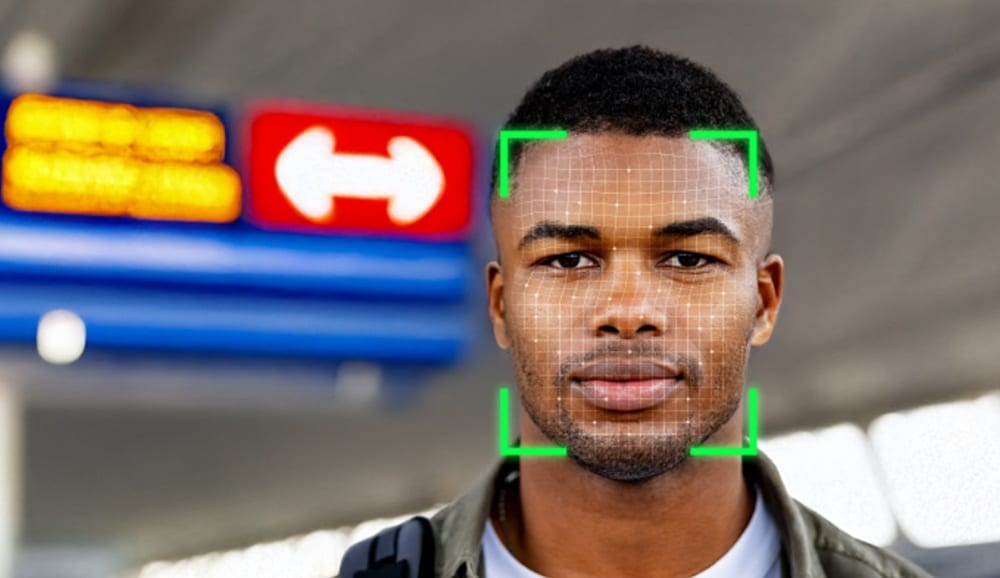According to a new blog by HID, the skies are set to get a whole lot busier. By 2040, air travel is projected to reach a staggering eight billion passengers annually. To manage this influx efficiently, airports, airlines and government authorities are turning to cutting-edge biometric technologies to better navigate congested terminals. Since airports run on identity verification, implementing accurate, high-throughput authentication solutions is critical to delivering an exceptional traveller experience today and tomorrow.
The growing role of facial recognition in air travel
Biometric technologies — particularly facial recognition — are revolutionising airport passenger processing by providing a secure, seamless and contactless identity verification experience.
For air travel, high passenger volumes paired with stringent security requirements lead to lengthy queues and repetitive ID checks. Facial recognition plays a crucial role in bypassing these bottlenecks. This technology helps reduce wait times, streamline security procedures and enhance operational efficiency.
And the adoption of facial recognition technology is accelerating. According to the IATA Global Passenger Survey, 75% of passengers are comfortable providing biometrics in advance of their journey, and over 70% of airlines expect to implement biometric ID management by 2026.
But here’s the catch: not all facial recognition systems are designed to excel in real-world, “must work” scenarios. A core differentiator is the image capture device — as capturing high-quality images is the first critical step in achieving accurate facial recognition.
Overcoming unique air travel challenges
As the saying goes, “A system is only as strong as its weakest link.” When it comes to facial recognition, that link is often image quality. Facial recognition algorithms rely on clear images to analyse unique facial features to verify identity effectively.
However, airport environments are complex and present unique challenges that can impact the accuracy and efficiency of facial recognition systems.
Lighting conditions
Poor lighting, glare and shadows can degrade image quality, leading to reduced accuracy, false positives and false negatives. The ideal capture device for air travel is designed to adjust automatically to lighting changes, delivering high-quality images in diverse lighting conditions — from bright sunlight streaming through terminal windows to dimly lit corridors.
Diverse traveller demographics
Airports serve travellers from all over the world. Therefore, inclusivity is a “must-have” capability in these mission-critical settings. Facial recognition systems in airports must be purposely built to recognise individuals across different skin tones, ages, genders, heights and accessibility requirements. Without AI-trained algorithms to address matching bias, systems risk inconsistent performance and exclusionary results.
High passenger throughput
Airports are high-traffic environments where facial recognition systems must process hundreds and thousands of travellers quickly and accurately. Any delays in authentication can lead to long lines, frustrated travellers, operational disruptions and even regulatory penalties. Consider an edge capture device — allowing for real-time biometric processing directly on the device itself and bypassing communication with servers. This improves performance, reduces latency, lowers bandwidth requirements and enhances privacy — minimising bottlenecks while maintaining security standards.
Spoofing attempts
Unattended authentication systems are vulnerable to spoofing attempts. Facial recognition capture devices offering advanced presentation attack detection (PAD) with passive liveness detection features are essential to preventing fraud and safeguarding airport security.
Elevating passenger processing with the right technology
From check-in to pre-security checkpoints to self-boarding, facial recognition technology is redefining the airport travel experience. But the key to success lies in the quality of the image capture device. In an airport setting where security is a must, poor authentication performance can have serious consequences — from denied service to security breaches to dreadful passenger experiences. Airports, airlines and government authorities must invest in high-performance facial recognition systems designed to handle common air travel challenges.
Ready to take the next step?
Selecting the right facial recognition system starts with asking the right questions. Our latest infographic, Selecting a Facial Recognition System for Passenger Processing? Start With These Key Questions!, provides a list of questions for decision-makers looking to deploy biometric technology effectively.
Additional resources:
Read more about biometrics in air travel
Learn about HID’s AI-powered facial recognition technologies
Explore HID’s facial recognition camera system
Stay updated — subscribe to the HID Biometric Beat monthly eNewsletter
For more HID news, click here





